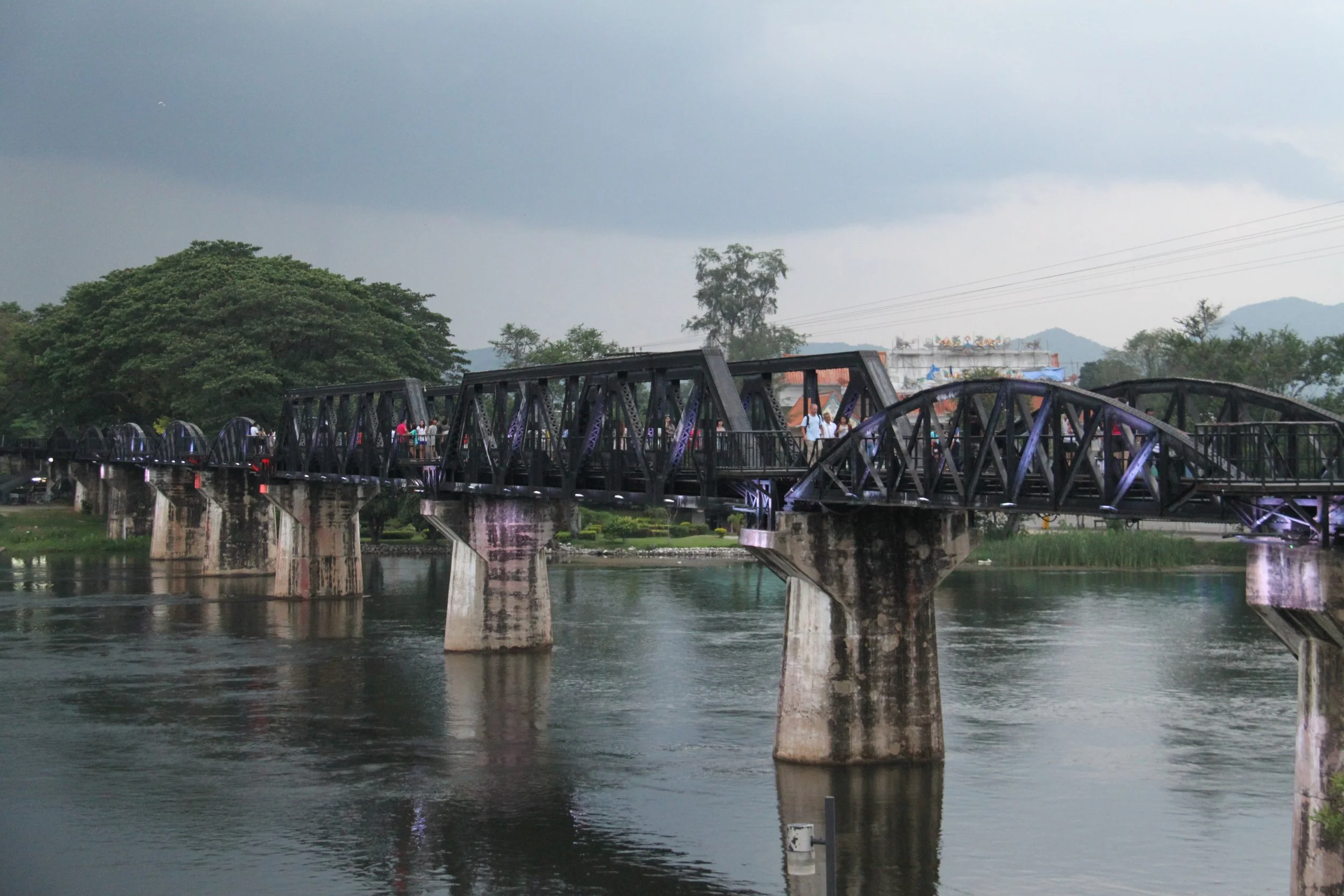The Railway after the War
The Bridge over the River Kwai (at dusk)
(Revised 9th August 2025)
At the Nam Tok Railway Station, almost at the end of the current operating section of the Burma-Thailand Railway, displayed on the wall, is an old framed, black and white photo taken back in 1955. It shows the rebuilding of the Bridge over the River Kwai which was badly damaged by allied bombing during the war. While many are aware of the story of the construction of the 415 kilometre Burma-Thailand Railway and the appalling loss of life, this picture signifies the story of the line after the war.
The railway was built to supply the Japanese troops fighting against the Allies in Burma (now Myanmar). The line was completed in October 1943 and until the end of the war and despite substantial damage inflicted by allied bombing, the railway managed to keep operating.
After the war, although in very poor condition, the railway was used to move both POW and Japanese personnel back down into Thailand. Once done, it was then used for the grim task of transporting the remains of POWs recovered from cemeteries along the railway, to the war cemeteries that we now know at Kanchanaburi (Thailand) and Thanbyuzayat (Myanmar).
Rebuilding the Bridge over the River Kwai after the war (Click to enlarge)
Chungkai Cutting
In determining the future of the railway after the war, the Allies had two points to consider. Firstly, the importance of this rail link between Thailand and Myanmar given that the terrain made it extremely difficult to maintain the line. It was noted that some bridges were almost too weak to carry locomotives and, in some cases, even the carriages had to be moved across one by one. Consequently, it was thought that substantial financial resources would have to be devoted to the Railway to upgrade its infrastructure if it was to continue operating.
Secondly, it was deemed that there was a need for the restitution of losses by countries where not only had the Japanese forcibly recruited labour for the railway but had also commandeered locomotives, rolling stock, track and other infrastructure. For example, the bridge spans used in constructing the Bridge over the River Kwai, had been taken from an existing rail bridge in Java, now part of Indonesia.
In 1947, the Allies decided that the railway from Thanbyuzayat (Myanmar) to the Myanmar-Thailand border would be torn up and the Thailand section sold to the Thai Government. The proceeds of this sale were to go to countries entitled to reparation.
The Thai Government closed the railway and much of the materials were used in its existing railway network elsewhere in Thailand. However, in 1957, the Thai Government reopened a 130 kilometre section of the original Burma-Thailand Railway from Nong Pladuc (on the main line from Bangkok to Singapore) north to Nam Tok. This section continues today as a very popular tourist line, passing over the Bridge over the River Kwai, through the Chungkai Cutting and over the spectacular Wang Pho Viaduct, on its way to Nam Tok.
At Nam Tok, a short section continues about a kilometre to the Sai Yok Noi Waterfalls. But beyond that, jungle and farming are gradually reclaiming the railway. It is only places like the Hellfire Pass section that you can easily see the disused railway.
Historic War Tours visits both the used and disused sections of the Railway and has tours that include travelling on part of the operating section of the Burma-Thailand Railway. For further details on these tours, visit www.historicwartours.com.au/burma-thailand-railway-tours
Wang Pho Viaduct
Cutting on a disused section of the railway
End of the line - Sai Yok Noi, Nam Tok
Hellfire Pass and Walking Trail
Source:
The destruction of the railway, Accessed 9th August 2025, https://anzacportal.dva.gov.au/wars-and-missions/burma-thailand-railway-and-hellfire-pass-1942-1943/events/after-war/destruction-railway






